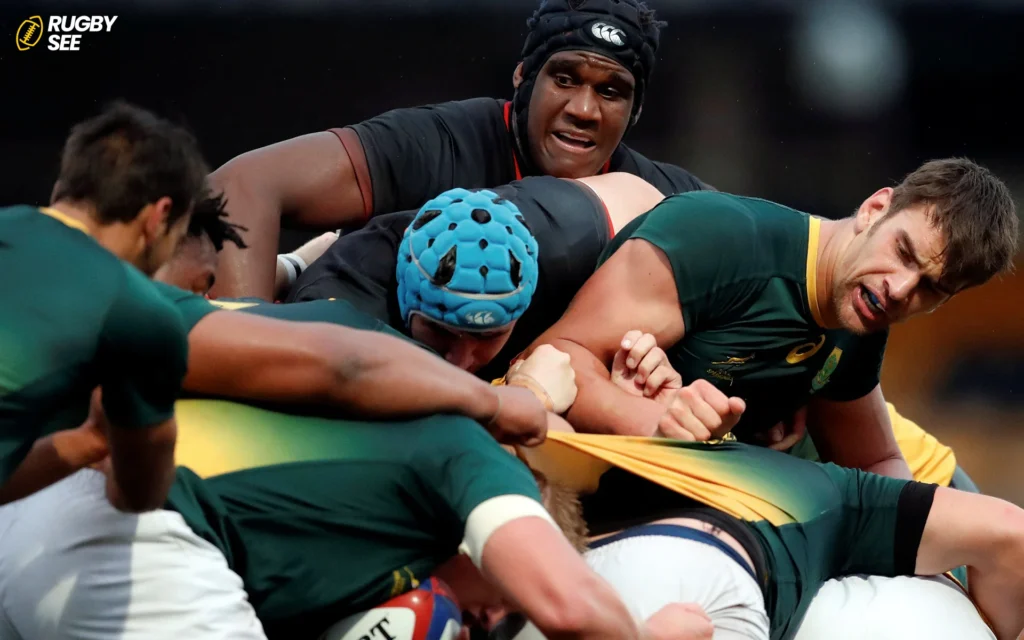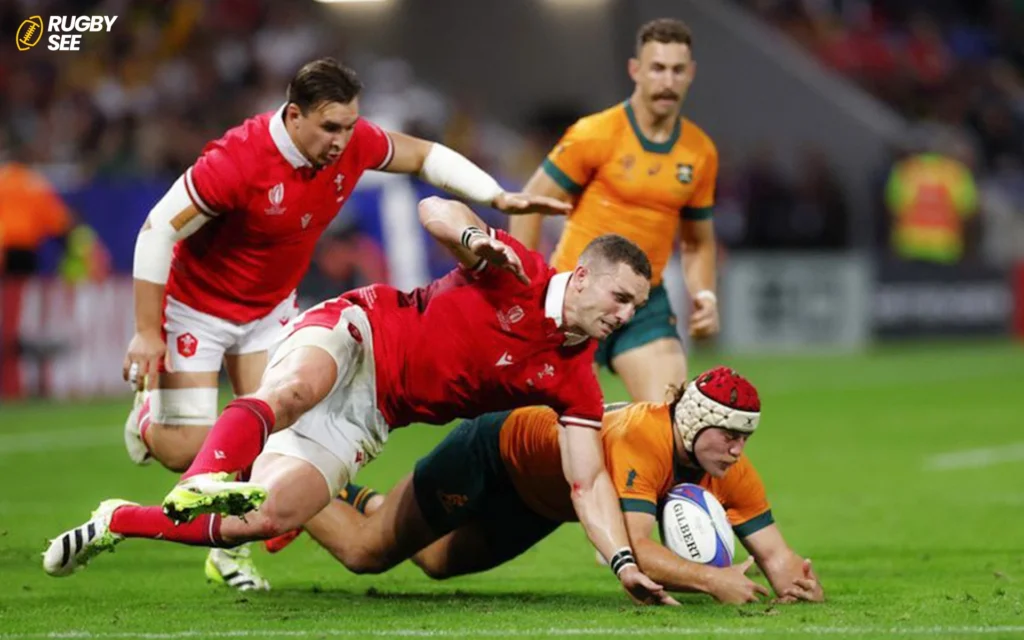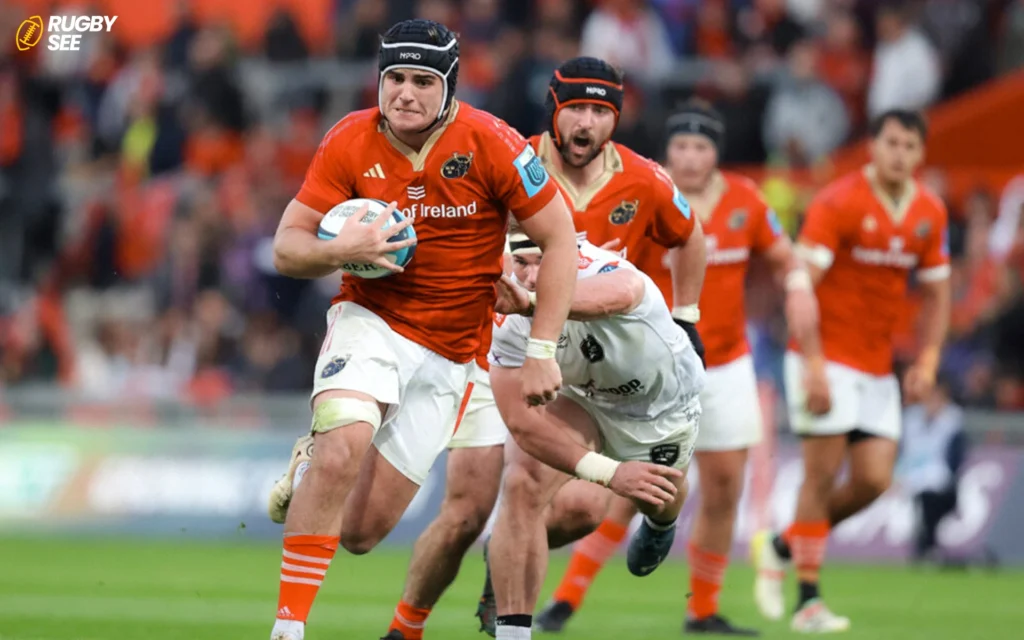Rugby, a sport known for its physicality, speed and strategic play, requires not only skill and determination, but also the right equipment. One of the most important pieces of equipment for any rugby player is their cleats, also known as boots. This article Of Rugbysee discusses the importance of rugby shoes, their unique features compared to other sports shoes, and tips for choosing the right pair. Whether you’re an experienced player, a beginner or just a sports enthusiast, understanding the role of cleats in rugby can provide insight into the intricacies of the game.
The Role of Cleats in Rugby: More Than Just Footwear
Rugby cleats are more than just a part of the uniform; they are a vital piece of equipment that affects a player’s performance, safety, and ability to execute plays effectively. The primary function of rugby cleats is to provide traction on the field. Rugby is played on grass fields, which can become slippery due to weather conditions or wear and tear during the game. Cleats help players maintain their footing, making it easier to run, change direction, and tackle without slipping.
Unique Features of Rugby Cleats
While they may seem similar to soccer cleats at first glance, rugby cleats have several unique features designed to meet the specific demands of the sport:
- Reinforced Durability: Rugby involves a lot of physical contact, including scrums, rucks, and mauls. Cleats designed for rugby are built to withstand these forces, featuring reinforced materials and construction to endure the rigors of the game.
- Varied Cleat Patterns: The layout and length of the studs on rugby cleats can vary, tailored to different playing positions and field conditions. Forwards, who need more traction for pushing in scrums, often wear cleats with longer studs. Backs, requiring speed and agility, might opt for cleats with shorter studs for quicker movements.
- High Ankle Support: Some rugby cleats come with a higher cut to provide additional ankle support, reducing the risk of injuries during the game.

Choosing the Right Rugby Cleats
Selecting the appropriate rugby cleats is crucial for performance and safety. Here are some tips to consider when choosing your pair:
- Consider Your Position: The position you play can influence the type of cleats best suited for you. Forwards might benefit from cleats with more grip and durability, while backs might look for lighter, more agile options.
- Field Conditions: The type of fields you play on should also influence your choice. Players on softer, wetter pitches might need longer studs for better traction, whereas those on harder, drier fields might prefer shorter studs.
- Comfort and Fit: Comfort is key in choosing the right cleats. Ensure they fit well, providing enough room for the toes but snug enough to prevent excessive movement inside the shoe.
- Quality and Durability: Investing in a high-quality pair of cleats can make a difference in durability and performance. Look for reputable brands known for their rugby gear.
The Evolution of Rugby Cleats
Rugby cleats have evolved significantly over the years, from the basic leather boots of the early days to the high-tech options available today. Modern advancements in materials and design have led to lighter, more durable cleats that provide better support and flexibility. Manufacturers continuously innovate, incorporating feedback from players to improve the functionality and comfort of their products and if you want to know about Scrums in Rugby read Are There Scrums in Rugby League.
The Impact of Cleats on Performance and Safety
The importance of wearing the right cleats cannot be overstated. Not only do they enhance a player’s performance by improving speed, agility, and stability, but they also play a crucial role in preventing injuries. Cleats that offer adequate traction and support can reduce the risk of slips, falls, and ankle injuries, which are common in the high-impact world of rugby.
As rugby continues to grow in popularity around the world, the focus on equipment, especially rugby cleats, intensifies. Players and manufacturers alike are always seeking ways to enhance performance and safety on the field. This next section explores further aspects of rugby cleats, including maintenance tips, the environmental impact of cleat production, and the future of rugby footwear.
Maintenance and Care of Rugby Cleats
Proper maintenance of rugby cleats is essential for extending their lifespan and ensuring they provide the best performance. Here are some maintenance tips for rugby players:
- Regular Cleaning: After each game or practice, remove mud and grass from the cleats. Washing them with water and a soft brush can prevent dirt buildup, which can affect the cleats’ integrity over time.
- Drying Properly: Allow cleats to dry naturally in a well-ventilated area. Avoid direct heat sources like radiators or hair dryers, as they can damage the material.
- Checking Studs: Regularly check the studs for wear and tear. Replace them if they are worn out to maintain optimal traction.

The Environmental Impact of Cleat Production
The production of rugby cleats, like any footwear, has an environmental impact, primarily due to the materials used and the manufacturing process. Many cleats are made from synthetic materials, which are not biodegradable. However, there is a growing movement towards sustainability in sports equipment production:
- Eco-Friendly Materials: Some manufacturers are exploring the use of recycled and sustainable materials to reduce their environmental footprint.
- Innovations in Manufacturing: Efforts are also being made to improve the efficiency of manufacturing processes, reducing waste and energy consumption.
These initiatives are part of a broader trend in sports towards sustainability, reflecting a commitment to protecting the environment while providing athletes with high-quality equipment.
The Future of Rugby Cleats
The future of rugby cleats looks promising, with ongoing innovations aimed at improving performance, safety, and sustainability. Some potential developments include:
- Advanced Materials: New materials that offer superior strength, flexibility, and durability, while being lighter, could revolutionize cleat design.
- Customization: Advances in manufacturing technology may allow for more personalized cleats, tailored to individual players’ feet and playing styles.
- Smart Technology: Incorporating sensors and smart technology into cleats to track performance metrics and provide feedback to players is an exciting possibility.
These advancements underscore the dynamic nature of rugby equipment design, where the pursuit of excellence drives continuous improvement and if you want to know about getting Concussions in Rugby read Do Rugby Players Get Concussions.

Rugby cleats are the foundation of every player’s kit, essential for performance, safety, and the overall enjoyment of the game. Whether you’re charging down the field, participating in a scrum, or making a critical tackle, the right pair of cleats can make all the difference. By understanding the unique features of rugby cleats and taking the time to choose the right pair, players can elevate their game and protect themselves from the physical demands of rugby. As the sport continues to evolve, so too will the technology and design of rugby cleats, ensuring players have the best tools at their feet to face the challenges of the game.










